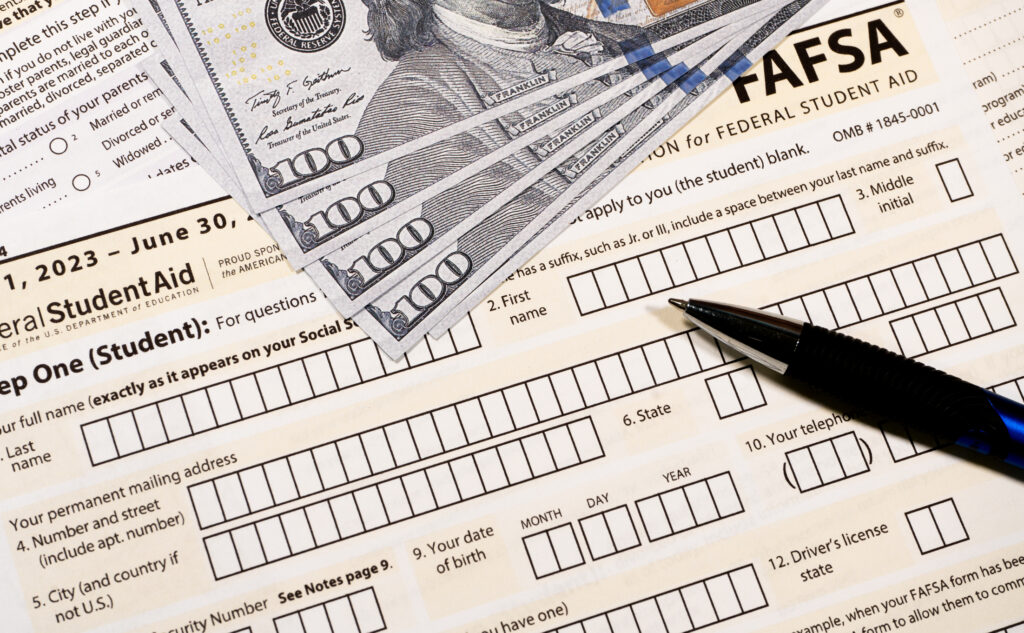The Iowa Board of Regents heard Wednesday from state universities about impacts from the delayed FAFSA cycle. (Photo by Richard Stephens via iStock / Getty Images Plus)
Despite delays and other challenges faced by universities and students this past FAFSA cycle, state university officials said during an Iowa Board of Regents meeting Wednesday they share some optimism for the new cycle set to begin this winter.
Admissions leaders from the state’s public universities presented to the board of regents about the impacts of the last FAFSA cycle on enrollment numbers and demographics for this fall and expressed their hope for the next go-around, even with another scheduled delay.
University of Northern Iowa Director of Admissions Terri Crumley said that while universities saw the biggest change in the FAFSA form itself being delayed from October to December, the greatest impacts of a FAFSA cycle plagued with stops and glitches was the fact that they didn’t start receiving financial aid reports until mid-March.
This delay, as well as further issues with the data universities were receiving, caused financial aid awards to be pushed back until April, which Crumley said created challenges for both families and financial aid staff at colleges. UNI serves a higher percentage of low-income and first-generation students than its peers, she said, and not being able to work with them consistently on figuring out financial aid was difficult.
“Our counselors tend to really reach out to Pell Grant recipients a special way, because we know that they need additional assistance, and not having that data to know who those students were, not knowing which students filed the FAFSA, and who did not file the FAFSA was very problematic for a period of time,” Crumley said.
GET THE MORNING HEADLINES DELIVERED TO YOUR INBOX
The University of Iowa saw a record number of applications this spring, Assistant Provost and Executive Director of Admissions Kirk Kluver said, and a few thousand students had already accepted their offers, but staff had no way of knowing how enrollment would turn out once financial aid offers went out.
Financial aid records began to trickle in on March 12, and just over a month later, the university started sending out offers.
“There were weeks in the spring where we feared we would be under-enrolling, and there were weeks where we had real fears that we’d be over-enrolling, which would cause some significant challenges on our campus with housing, orientation, and course availability,” Kluver said.
However, Kluver said the UI ended up with enrollment numbers right around its target, at just over 5,200 first-year students and more than 1,000 transfer students.
While first-year student applications at the UI were up 8.1%, the number of those applicants who also filled out the FAFSA had decreased by 8.3% from last year, Kluver said. Nationally, the number of high school seniors who filled out the FAFSA is down 9%, according to the National College Attainment Network.
Of the enrolled first-year class, FAFSA filings dropped from 87% to 86% while Pell Grant recipients increased by almost 2% to 19.3%, which Kluver said he’s heard has been common across the U.S. Other areas of concern included the share of first-generation students, which remained steady at around 20%, and first- to second-year retention rates, which Kluver said hit 90%.
Iowa State University Assistant Vice President and Executive Director of Admissions Katharine Suski said during the presentation that the delays with the financial data looked to have a larger impact on nonresident students, both out-of-state and international, than on Iowa students.
Nonresident students waited longer to make their enrollment decisions after financial aid offers were released, Suski said, which in turn delayed enrollment and budget management, housing coordination and orientation attendance, among others. However, ISU saw acceptances and enrollment from resident students throughout the FAFSA cycle.
“My interpretation is that students were willing to commit earlier and without financial aid packages due to the strong value offered by Iowa State as a regent university,” Suski said. “Even without knowing their financial aid awards, they knew that their Iowa State education would be affordable.”
Some students are still having issues even after getting their FAFSA submitted, Kluver said. The UI has found about 200 students who haven’t had their financial aid disbursed despite getting the form filed and accepting awards. The university has waived any late fees and is working with the impacted students to figure out their aid.
Financial aid teams at the universities are still looking into impacts from other changes to the FAFSA, such as changes to applicants coming from families with farms or businesses, or who have multiple students in college at the same time. Kluver said the UI saw several students come in and try to find solutions to the possibility of their aid being reduced as a result of these shifts.
Next year’s FAFSA will be released fully to the public on Dec. 1 after a phased rollout to certain groups starting in October. In past years, the form has become available to all students in October, but Kluver said those in higher education are feeling confident about the timeline.
Kluver and others at Iowa’s universities are “eagerly awaiting to see if things go as planned on Dec. 1,” he said, and are hoping for a positive outcome of receiving financial aid records by mid-December.
“Looking ahead, however, we are optimistic, as we always are in admissions,” Crumley said.
SUPPORT NEWS YOU TRUST.

